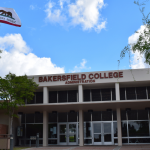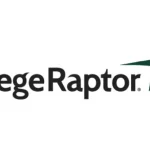SMS texting first emerged in higher education in the late 2000s and early 2010s as a way to send out emergency notifications to students, faculty, and staff.
As SMS texting technology has evolved over the past decade, colleges and universities now have three primary options to consider for use at their institution. This blog covers what you need to know about each approach, and why AI-Powered 2-way SMS is emerging as “best of breed”.
1-way SMS
The term 1-way SMS is fairly self-explanatory. A college or university can send a 1-way SMS message to a student, staff or faculty member. This approach is most commonly used for reminders and emergency situations. When you simply want to “get the word out”, a 1-way text message is sufficient. Maybe you want to remind a student of a deadline or a scheduled meeting with an adviser. These messages do not necessarily require a response. For these use cases, 1-way SMS gets the job done. It’s also the least expensive option.
However, a limitation of this technology is that when a recipient does want to respond, there is no efficient frictionless way to do it. Imagine, in the case of the 1-way text reminder about an appointment with an adviser, that the student wants to cancel the appointment or reschedule it. There is no way to do it via a text response back to the sender. A student will need to call the office or visit the website to cancel the appointment. This is not efficient for the student or the administrative staff. The 1-way SMS approach is “low touch” and falls short of the modern communications that students expect.
2-way SMS
The power of 2-way SMS is that it facilitates the ability for a response. A college or university can send a 2-way SMS message to a student and ask the recipient to respond with a word or letter to indicate a response. For example, send a text to a student to confirm their scheduled meeting with an adviser, and ask the student to respond with a “C to confirm” or an “X to cancel.” This is more efficient than the 1-way SMS. You can flow responses into your scheduling software and save everyone time. It’s easy for the recipient to respond if there is a need to change the pre-arranged meeting. For this reason, 2-way SMS is a better tool than 1-way SMS.
However, there are limitations to 2-way SMS technology. Any responses beyond the simple letter or word responses will not trigger a workflow action. There is likely no one watching all the random responses. Students may feel that they “sent you a text” to explain something or ask a question – but you (the school) won’t see it. This can lead to frustration, and more friction.
Another shortcoming is the staff bandwidth necessary to monitor another channel for basic support. In some ways, if you have the same person monitoring the phone, the desk, and the text; it’s almost too distracting. This inevitably leads to slow response time and lack of efficient student engagement. Also, the consistency of answers can be an issue from agent to agent.
AI-Powered 2-way SMS
AI-Powered 2-way SMS, also known as “Conversational SMS”, is the most modern form of texting today. What separates it from standard 1-way SMS and 2-way SMS is both its flexibility and horsepower.
AI-Powered 2-way SMS handles everything that 1-way text and 2-way text messaging can do – and it can facilitate actual conversations with students. These conversations can happen in a couple of ways:
- If you want to send a text message to a small cohort of students who are late in supplying paperwork, and want to be able to respond to and/or follow-up with each one, you can send an “Agent-backed” campaign to provide individualized support.
- If you want to send a text message to a large group making a big announcement, you can send an “AI-backed” campaign. If a recipient of this campaign has questions, they can engage with the AI, which relies on a consistent and thorough knowledge base of content for its responses.
A really nice aspect of the technology is that it is easy to switch between the two approaches.
2-way AI-powered SMS technology is emerging as “best of breed”. It provides students with the most modern communication experience. It provides staff with a tremendous tool for extending their reach and connecting with students in a way that is efficient, leverages workflows and memorializes all conversations in the student’s record. It makes every institution that uses it accessible 24/7. That is powerful and it is what students expect from their college or university.
The Wrap
Higher education faces two immediate challenges: 1) engaging students and prospects with modern communications, and 2) extending the reach of overburdened staff so they can scale the personal touch. AI-powered 2-way SMS is the technology that is emerging as “best of breed” to address both of these critical challenges.















